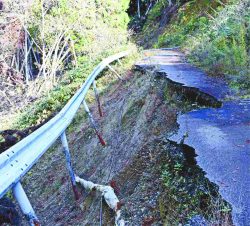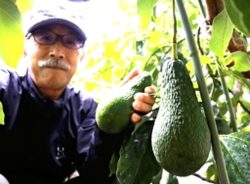
The Meiji Jingu Gaien area, which includes the National Stadium, center, is seen on Jan. 7.
11:04 JST, February 20, 2022
There is both hope and dissent over the planned redevelopment of the Meiji Jingu Gaien area, which includes the National Stadium that served as the main venue of the 2020 Tokyo Olympics and Paralympics.
The redevelopment is set to start this year, and while hopes are high that the area will become a new sports hub attracting visitors from Japan and abroad, some people are calling for a review of the plan as it involves cutting down about 1,000 trees, some over 100 years old.
The Tokyo metropolitan government’s council approved the urban development plan for the area on Feb. 9, giving the project the green light.
The redevelopment of the about 28-hectare area will be carried out by Mitsui Fudosan Co., Itochu Corp., the Meiji Jingu shrine and the Japan Sport Council. The aging Jingu Baseball Stadium and Prince Chichibu Memorial Rugby Stadium will be both demolished and rebuilt, and their locations switched. Two new high-rise buildings with offices and commercial facilities will be built, among other structures.
The project is set to be launched around the end of this year and completed by 2036.
The International Council on Monuments and Sites (ICOMOS) Japan — an organization that makes recommendations for the protection of cultural heritage — requested a revision to the plan after the metropolitan government released the draft in December.
According to the documents submitted by the developers to the metropolitan government, 971 of the 1,381 trees in the area will be cut down. Among the trees to be felled, 267 were in poor condition, the documents said.
Ginkgo trees that are part of the area’s well-known landscape will be kept, but trees slated to be cut down include some over 100 years old.
“Cutting down the trees is an act that hurts history and culture,” said Prof. Mikiko Ishikawa of Chuo University, who serves as a board member of ICOMOS Japan.
Other documents from the developers state that more trees will be planted than the number that will be cut down.
“We will examine the results of a survey by arborists and listen to their advice. We plan to preserve as many trees as possible while also creating new greenery,” a Mitsui Fudosan official said.
Meiji Jingu Gaien was established in 1926 as part of the shrine dedicated to Emperor Meiji. It was the first area to be designated under legislation as a scenic zone that requires preservation efforts.
“The creation of greenery is also important,” a metropolitan government official said. “We will ask the developers to take appropriate measures.”
"Society" POPULAR ARTICLE
-

M4.9 Earthquake Hits Tokyo, Neighboring Prefectures
-

Israeli Tourists Refused Accommodation at Hotel in Japan’s Nagano Pref., Prompting Protest by Israeli Embassy and Probe by Prefecture
-

M7.5 Earthquake Hits Northern Japan; Tsunami Waves Observed in Hokkaido, Aomori and Iwate Prefectures
-

Tsukiji Market Urges Tourists to Avoid Visiting in Year-End
-

M5.7 Earthquake Hits Japan’s Kumamoto Pref., Measuring Upper 5 Intensity, No Tsunami Expected
JN ACCESS RANKING
-

Tokyo Economic Security Forum to Hold Inaugural Meeting Amid Tense Global Environment
-

Keidanren Chairman Yoshinobu Tsutsui Visits Kashiwazaki-Kariwa Nuclear Power Plant; Inspects New Emergency Safety System
-

Imports of Rare Earths from China Facing Delays, May Be Caused by Deterioration of Japan-China Relations
-

University of Tokyo Professor Discusses Japanese Economic Security in Interview Ahead of Forum
-

Japan Pulls out of Vietnam Nuclear Project, Complicating Hanoi’s Power Plans























